
The Northeast shoreline offers an ever-changing stage where great whales breach, pelagic birds wheel overhead, and small towns perch between salty air and spruce-lined hillsides.
We compiled this countdown of fifteen compact communities that pair maritime charm with remarkable wildlife encounters, whether you’re scanning for humpbacks or ticking off puffins from your life list.
Each place blends accessible boat tours with quiet headlands or lighthouses ideal for land-based spotting, so visitors can enjoy natural spectacles without the bustle of big ports. We highlight lesser-known lookouts, seasonal tips, and local operators who respect both the ocean and the pace of village life.
From windswept Cape Cod sandspits to granite-rimmed Maine coves, these towns remind us how rewarding it is to slow down and watch what rises from the sea or rides the breeze. Pack binoculars, layer up, and follow the gulls north; the whales are already there.
15. Provincetown, Massachusetts
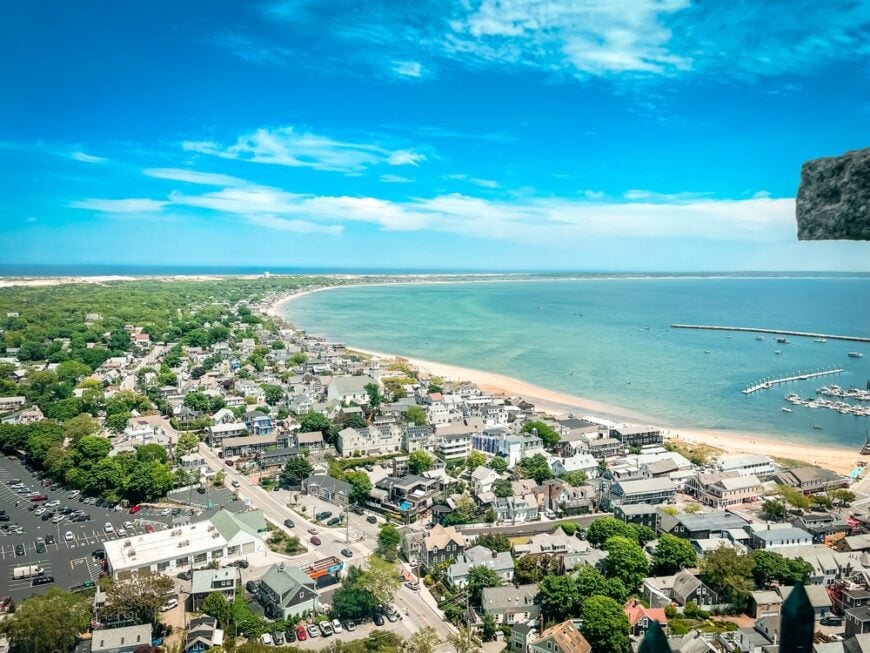
Perched at the very tip of Cape Cod, Provincetown draws watchers from around the globe thanks to its proximity to Stellwagen Bank National Marine Sanctuary, one of the richest feeding grounds for humpback and fin whales in the Atlantic.
Our favorite excursion boats leave MacMillan Wharf daily from late spring through October, often returning with tales of spy hops only yards from the rail. Birders walk the Province Lands dunes between sailings to spot nesting piping plovers and migrating shearwaters skimming the surf.
The town brims with art galleries, seafood shacks, and a vibrant history celebrating maritime heritage and creative freedom. Evening brings a different show as razorbills and petrels dart through pastel sunsets behind the Pilgrim Monument. Few places pack such biodiversity and cultural energy into a narrow spit of sand.
Provincetown offers 3-4 bedroom homes in the $500,000 to $800,000 range, a top destination for whale watching and seabird spotting along the beautiful New England coastline.
Where is Provincetown?
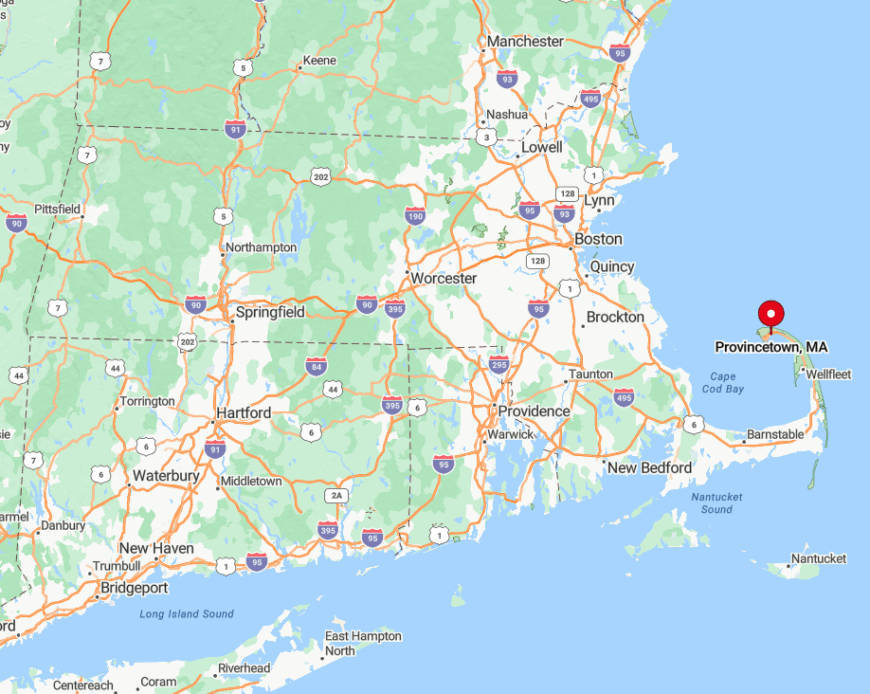
Provincetown sits at the far end of Route 6, roughly two hours from Boston without traffic. However, many visitors prefer the seasonal high-speed ferry from Long Wharf that reaches the harbor in ninety minutes.
Its outer-cape position means open Atlantic on three sides, funneling marine life close to shore and offering uninterrupted horizons for seabird flights. The narrow peninsula creates sheltered waters on Cape Cod Bay for calmer cruising, while the ocean side delivers dramatic swells for more adventurous sailors.
Logan Airport connections, rental cars, and bike paths all converge here, yet the town still feels like the last outpost before the open sea.
14. Camden, Maine
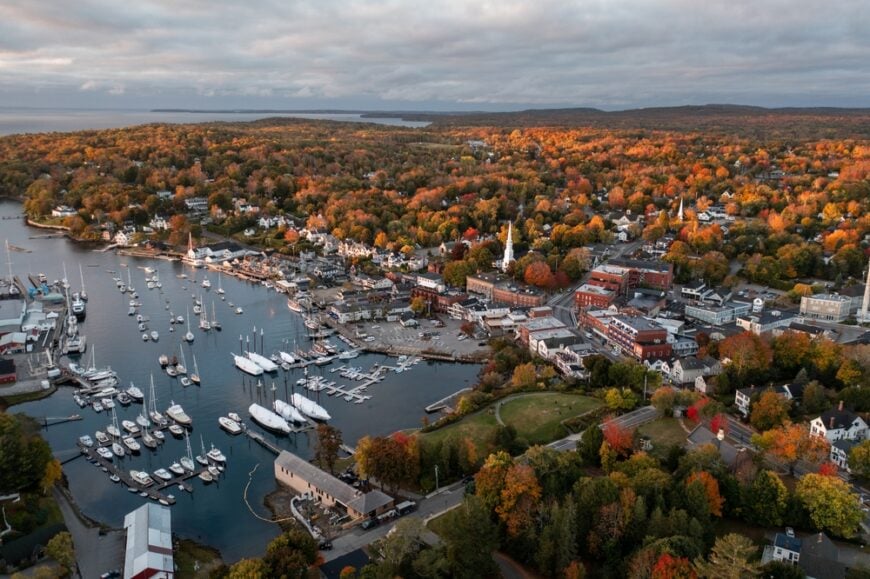
Camden’s postcard harbor, ringed by spruce-topped hills, provides a launch point for classic schooners and nimble whale-watch vessels heading toward feeding grounds off Penobscot Bay.
Visitors often begin the day with a dawn climb up Mount Battie in Camden Hills State Park, where northern gannets can be seen diving beyond the breakwater. Back at water level, the working wharf hosts trips searching for minke whales, harbor porpoises, and the occasional basking shark.
The town’s century-old library terrace, a quiet overlook, doubles as a land-based vantage point for spotting eiders and black guillemots. Local guides also run evening puffin cruises to Eastern Egg Rock during peak summer.
Add cozy bookstores and lobster rolls on the public landing, and Camden blends wildlife with mellow New England charm. Camden presents 3-4 bedroom homes priced between $400,000 and $700,000, a picturesque harbor town perfect for whale watching and admiring seabirds.
Where is Camden?
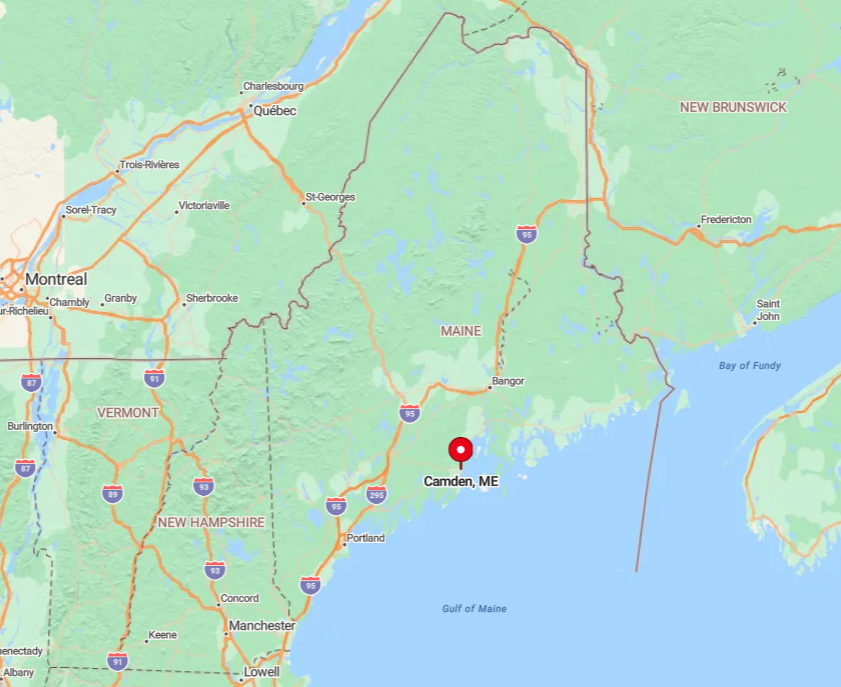
Camden lies midway up Maine’s coastline, about an hour and a half east of Augusta on U.S. Route 1, making it an easy detour on the drive to Acadia. The harbor nestles between the Camden Hills and Isleboro’s protective shadow, creating calm waters ideal for small boats.
Knox County Regional Airport in Rockland offers seasonal flights, while Concord Coach Lines links Camden to Boston’s South Station. Its location at the mouth of Penobscot Bay places guests within reach of rich tidal mixing zones that draw whales and seabirds.
13. Shelter Island, New York
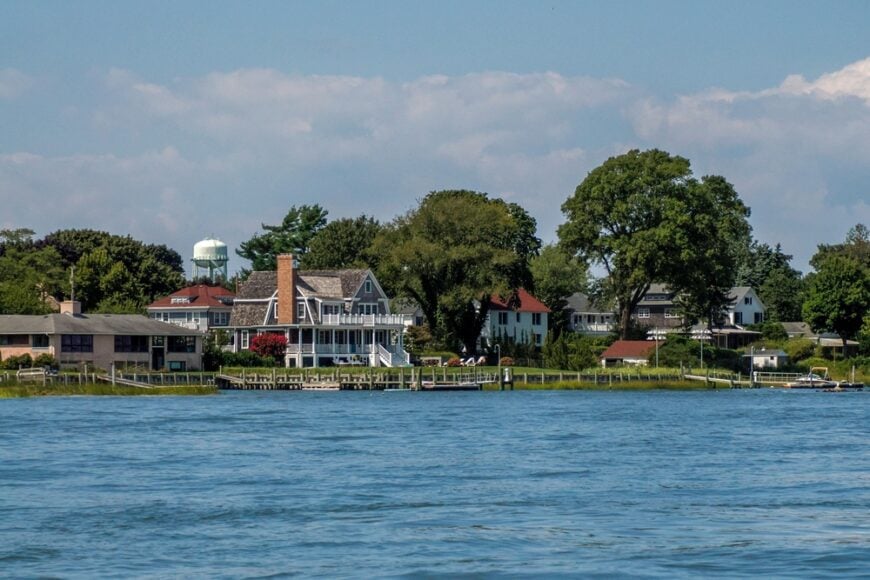
This low-key island hides between the North and South Forks of Long Island, accessible only by car ferry, which helps preserve its tranquil salt-marsh landscapes. Birders wander the Mashomack Preserve’s nine miles of shoreline trails to observe ospreys, terns, and late-season scoters in relative solitude.
Offshore, local captains offer small-group trips beyond Gardiners Bay where common dolphins and the occasional pilot whale surface in summer. Crescent Beach sunsets reveal silhouettes of diving gannets while monarch butterflies drift over the dunes in early fall, adding another migratory spectacle.
A handful of eateries cluster near Dering Harbor, yet night skies remain dark enough for star-lit listening to distant surf. Shelter Island proves that high-quality wildlife encounters can thrive within a short hop of New York City.
Shelter Island features 3-4 bedroom homes in the $600,000 to $900,000 range, offering stunning waterfront views and an excellent spot for observing local marine life.
Where is Shelter Island?
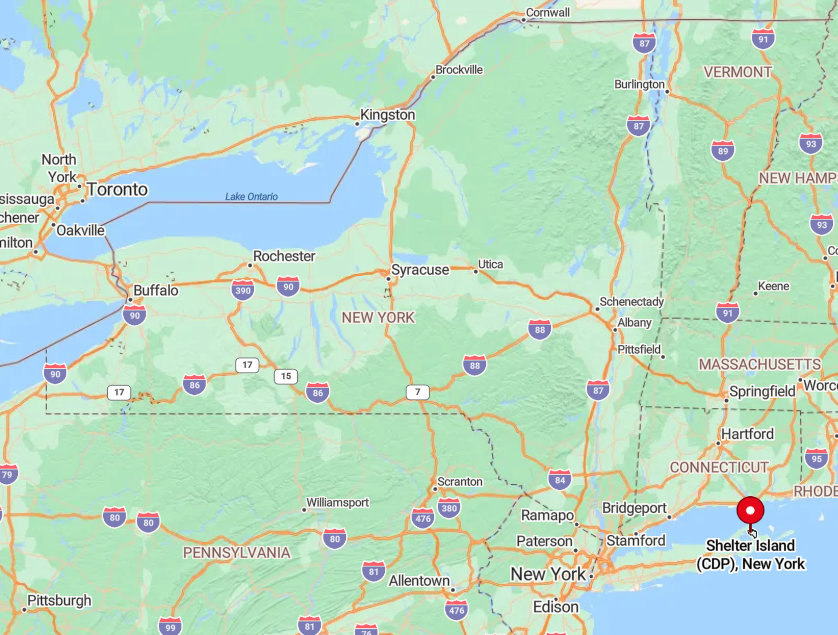
The island sits between Greenport and Sag Harbor, reached by a five-minute ferry that runs year-round and carries vehicles and pedestrians. Its encircling bays shelter eelgrass beds that feed juvenile fish, attracting seabirds and marine mammals.
Visitors can ride the Long Island Rail Road to Greenport, then walk onto the ferry for a car-free adventure. Once across, a compact road network and rental bikes make exploring coves and preserves straightforward.
12. Stonington, Connecticut

Narrow streets of colonial-era homes lead down to Stonington’s small fishing fleet, whose captains occasionally pivot from lobstering to wildlife cruises when baitfish schools draw whales close to shore.
From the Old Lighthouse Museum’s seawall, watchers spot double-crested cormorants drying their wings while roseate terns flash silver over the breakwater. The nearby Napatree Point Conservation Area, technically across the state line, adds sandy spits perfect for scanning for scoters and red-throated loons.
After an outing, coffee at a converted velvet mill pairs well with conversations about the day’s sightings. Evening brings dockside tastings from a craft rum distillery housed in a former factory, echoing the town’s seafaring past.
All of this unfolds without the crowds found in larger Mystic, just a few miles away. Stonington offers 3-4 bedroom homes priced between $400,000 and $700,000, where visitors can enjoy whale watching and spotting seabirds along the peaceful coast.
Where is Stonington?
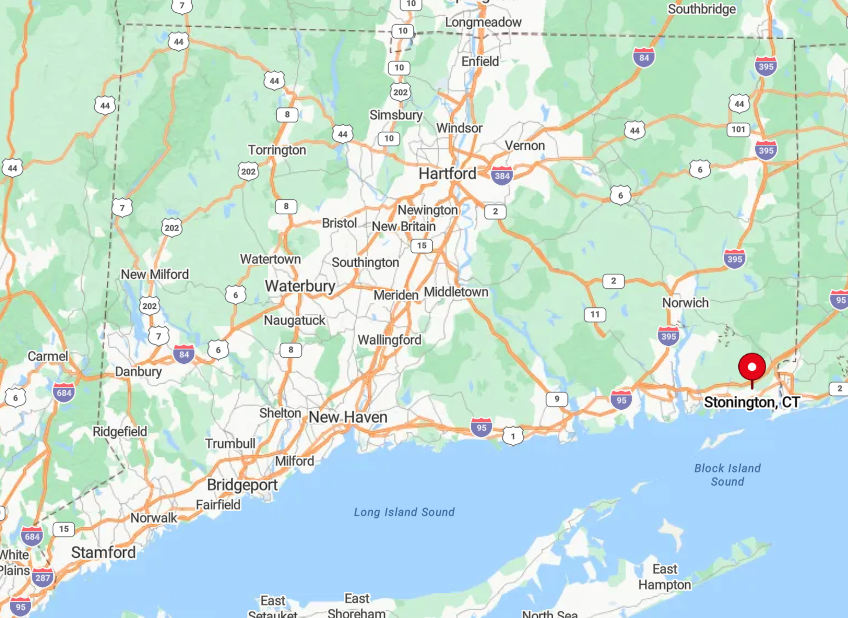
Stonington occupies a slim peninsula in Connecticut’s southeast corner, roughly halfway between New London and Westerly, Rhode Island, off Exit 91 of Interstate 95. Amtrak’s Northeast Regional stops in Mystic, where taxis or rideshares cover the final five miles to the borough.
The town’s placement between Fishers Island Sound and Little Narragansett Bay funnels tidal rips that concentrate baitfish, attracting whales closer to land than many expect. Small harbors and sheltered coves provide calm berths for wildlife tours even when the open Atlantic chops up.
11. Newburyport, Massachusetts
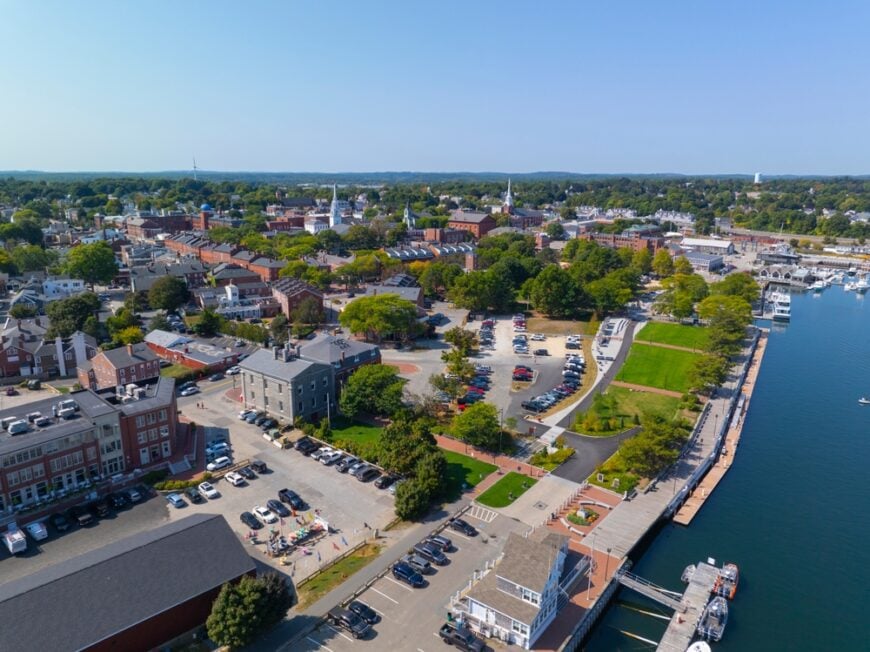
Newburyport pairs brick-lined Federal architecture with wild salt marshes just minutes away, creating a dual experience of culture and coastal ecology.
Parker River National Wildlife Refuge on Plum Island hosts thousands of shorebirds during migration, while winter brings snowy owls that perch on dunes within view of bundled birders.
Whale-watch vessels depart the Merrimack River’s mouth, bound for Jeffreys Ledge, where humpbacks and blue sharks feed along a steep underwater plateau. In town, the Custom House Maritime Museum recounts local seafaring lore, and restaurants plate freshly landed haddock from the waters that draw marine giants.
Harborwalk stretches along the river, perfect for spotting Bonaparte’s gulls and the occasional harbor seal. Newburyport’s compact downtown means you’re never far from espresso and egrets.
Newburyport presents 3-4 bedroom homes in the $500,000 to $800,000 range, an ideal location for those eager to watch whales and seabirds in their natural habitat.
Where is Newburyport?
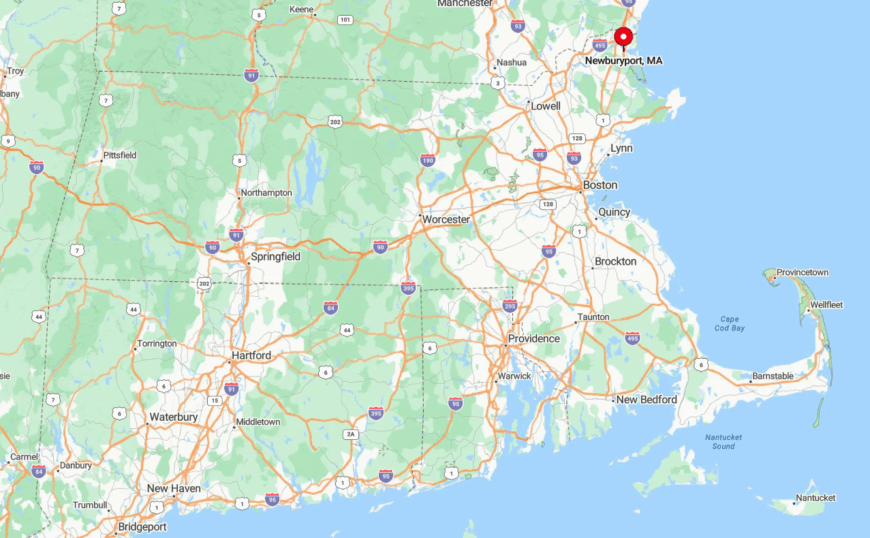
The city rests on Massachusetts’ North Shore, about 35 miles north of Boston via I-95 or the MBTA Commuter Rail’s Newburyport/Rockport Line. Its situation at the Merrimack estuary produces nutrient-rich outflow that entices marine life just offshore.
Routes to Jeffreys Ledge start within twenty minutes of leaving the dock, making trips shorter than those from more southern ports. The nearby Plum Island Turnpike provides quick access to barrier-island vantage points famed among East Coast birders.
10. Boothbay Harbor, Maine
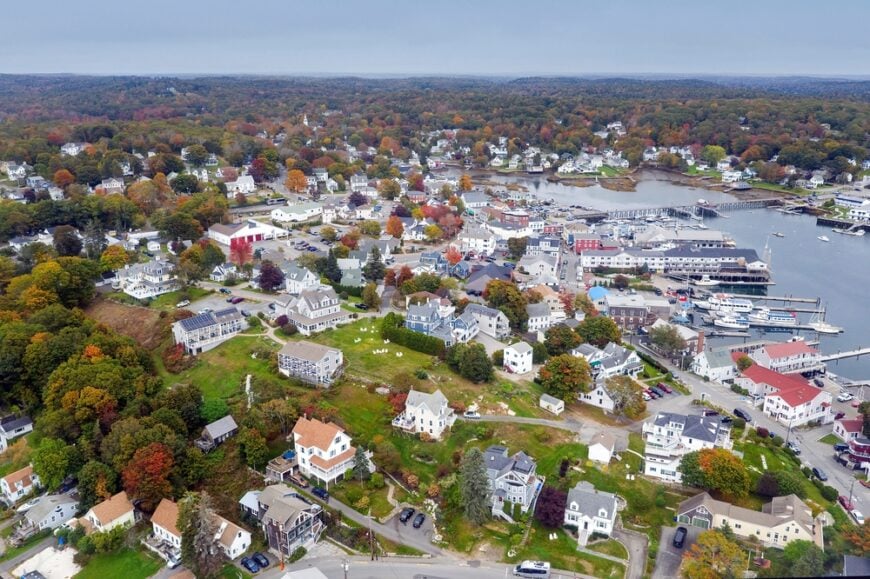
Boothbay’s working waterfront bustles with lobster boats, galleries, and the constant ring of gulls overhead, yet step aboard a whale-watch cruiser and you’re quickly in deep water frequented by finbacks and the occasional North Atlantic right whale.
Harbor-side operators also run puffin excursions to Eastern Egg Rock, where Atlantic puffins, razorbills, and Arctic terns nest from May through early August. On land, the Coastal Maine Botanical Gardens offers a tranquil loop for spotting warblers and bald eagles against floral backdrops.
Evenings, see seals haul out on ledges visible from footbridges linking the town’s islands. Hidden coves like Linekin Bay provide calm paddling for those preferring silent wildlife encounters by kayak.
Seafood shacks line the narrow streets, serving steamed clams fresh from the mudflats you paddled past. Boothbay Harbor features 3-4 bedroom homes priced between $400,000 and $700,000, a charming town that provides great opportunities for whale and seabird watching.
Where is Boothbay Harbor?
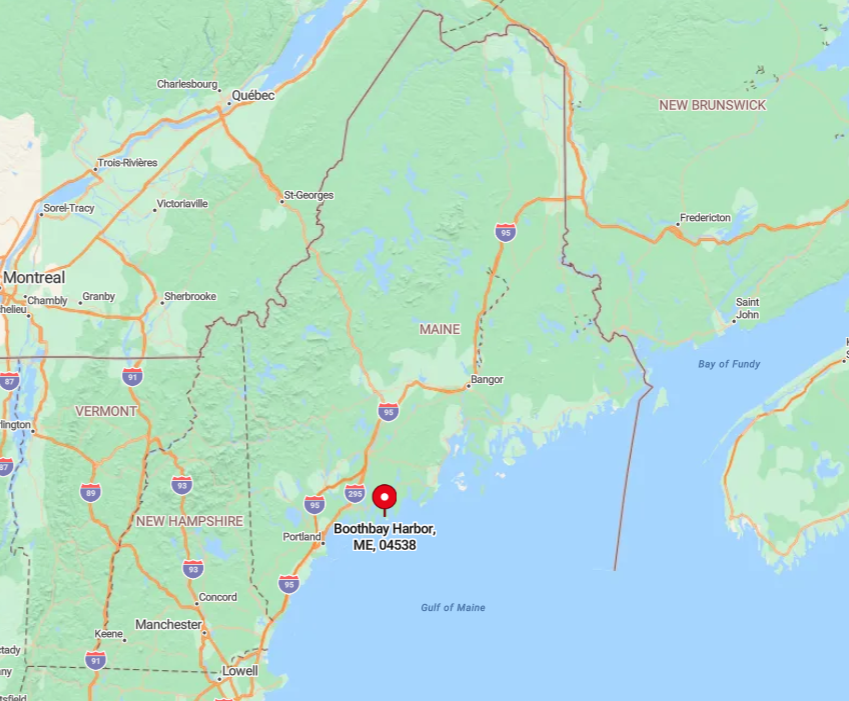
The town spreads across a cluster of peninsulas 60 miles northeast of Portland, accessible via U.S. Route 1 and State Route 27. Its jagged shoreline juts into the Gulf of Maine, shortening the boat ride to prime whale-feeding areas compared with more inshore communities.
The mid-coast location also means relatively warm eddies from the Gulf Stream mingle with cold currents, boosting plankton blooms. Concord Coach buses reach nearby Wiscasset; from there, taxis or seasonal trolleys finish the last fifteen miles.
9. Kennebunkport, Maine
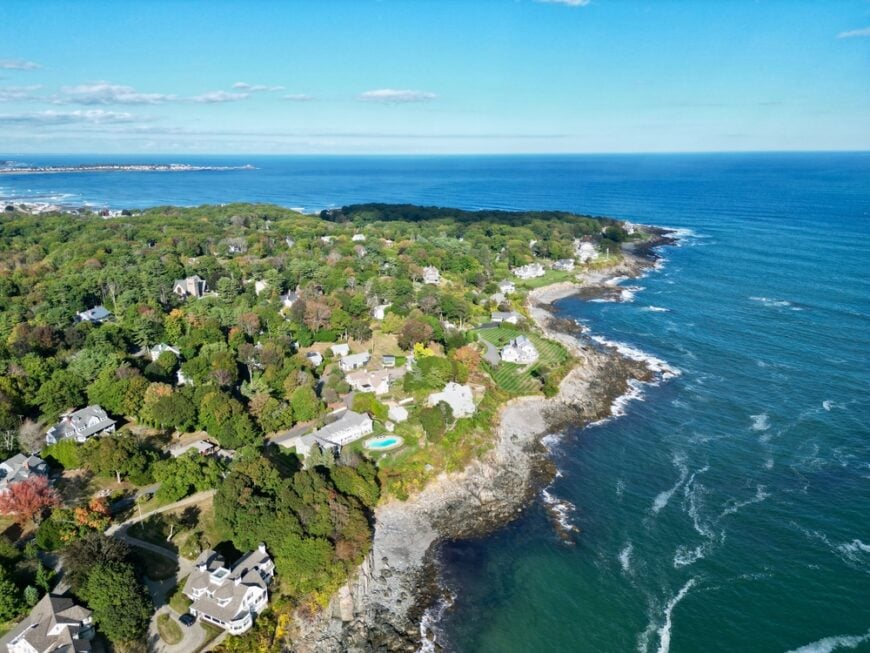
Known for its stately captain’s homes and riverside cafés, Kennebunkport doubles as a launch pad for observing minke and humpback whales only ten miles beyond the breakwater. Cruises often swing past Goat Island Light, a picturesque spot where black guillemots nest among granite blocks.
Land-based birders walk Goose Rocks Beach at dawn to spy sanderlings and least terns skittering along the tideline. In summer, local naturalists lead kayak tours up the tidal Kennebunk River, pointing out osprey nests and sunflower-yellow marsh skullcaps along the banks.
Dock Square buzzes with ice-cream lines, but turn the corner onto Ocean Avenue and grey seals appear above the swells. Even after decades of tourism, the town’s working fish pier keeps its seafaring roots alive.
Kennebunkport offers 3-4 bedroom homes in the $500,000 to $800,000 range, a beautiful coastal town where whale watching and seabird sightings are popular activities.
Where is Kennebunkport?
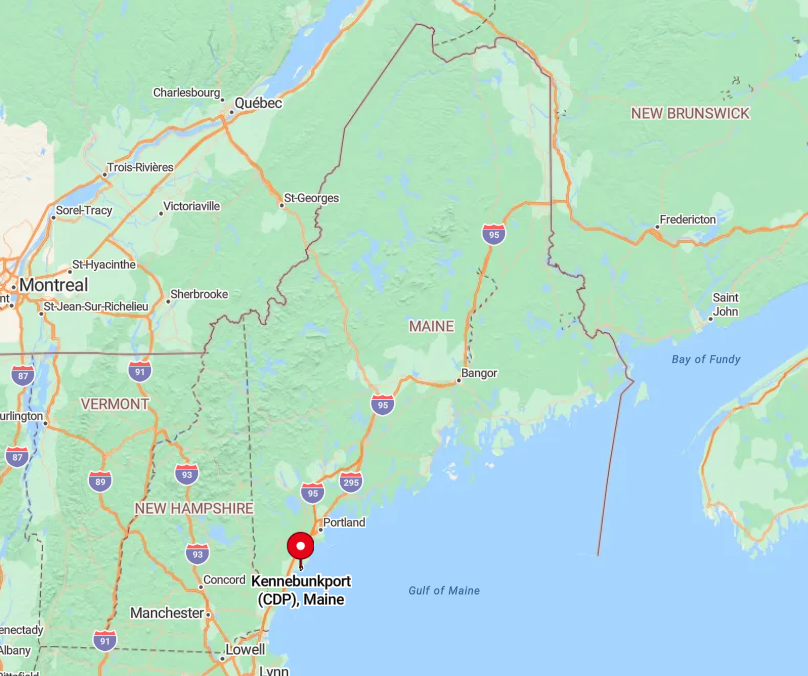
Kennebunkport sits 30 minutes south of Portland via I-95’s Exit 25, then a quick hop along U.S. Route 1 and Maine 35. Its south-central coastal placement offers access to inshore feeding shoals and deeper offshore canyons favored by larger whales.
The Downeaster train stops nearby Wells, where shuttles connect to town, making car-free visits possible. With sandy beaches to the south and rocky headlands to the north, geography provides varied habitat within a short radius.
8. Mystic, Connecticut
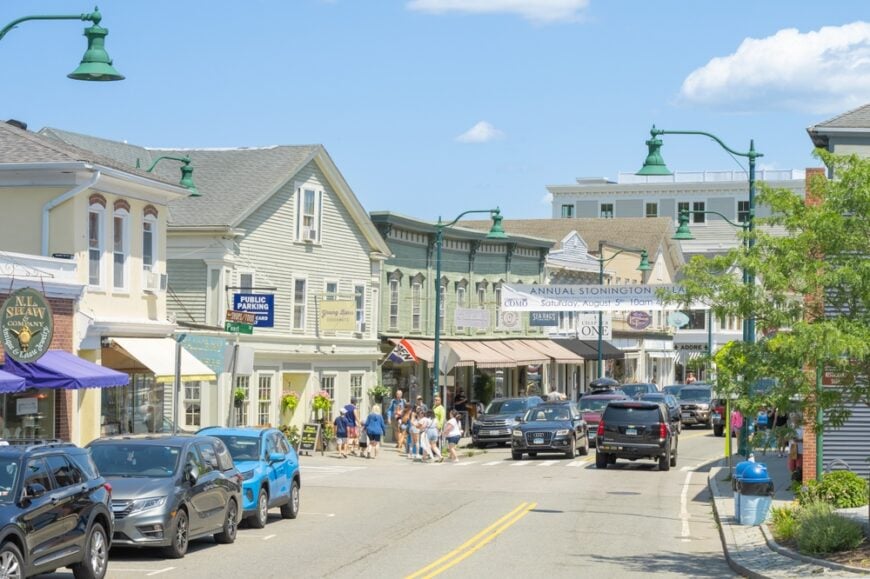
While many know Mystic for its historic seaport and tall ships, few realize that the same waters once navigated by 19th-century whalers still host living leviathans each summer.
Local boats track humpbacks along the edge of the continental shelf, and shorter harbor cruises often encounter harbor porpoises and Wilson’s storm-petrels.
On shore, the Mystic River Park boardwalk offers vantage points for spotting common eiders during colder months, while the nearby Denison Pequotsepos Nature Center adds woodland birding to the mix.
After time at sea, guests stroll through Mystic Seaport Museum’s recreated village or sample responsibly sourced oysters at dockside restaurants. Evening brings lantern-lit walks where guides recount tales of bygone whaling voyages. Mystic manages to weave maritime history with present-day conservation in a walkable setting.
Mystic presents 3-4 bedroom homes in the $400,000 to $700,000 range, offering easy access to the coastline for whale watching and bird watching adventures.
Where is Mystic?

Mystic is located off Exit 90 on Interstate 95 between New London and Westerly, making it one of the most accessible wildlife ports on this list. Amtrak’s Northeast Regional stops at Mystic Depot, a short walk from downtown.
Its position near the mouth of Fishers Island Sound provides quick access to protected cruising grounds before vessels venture into deeper Atlantic waters. The nearby Thames River and Long Island Sound junction creates nutrient convergence zones, attracting seabirds and schooling fish.
7. Ogunquit, Maine
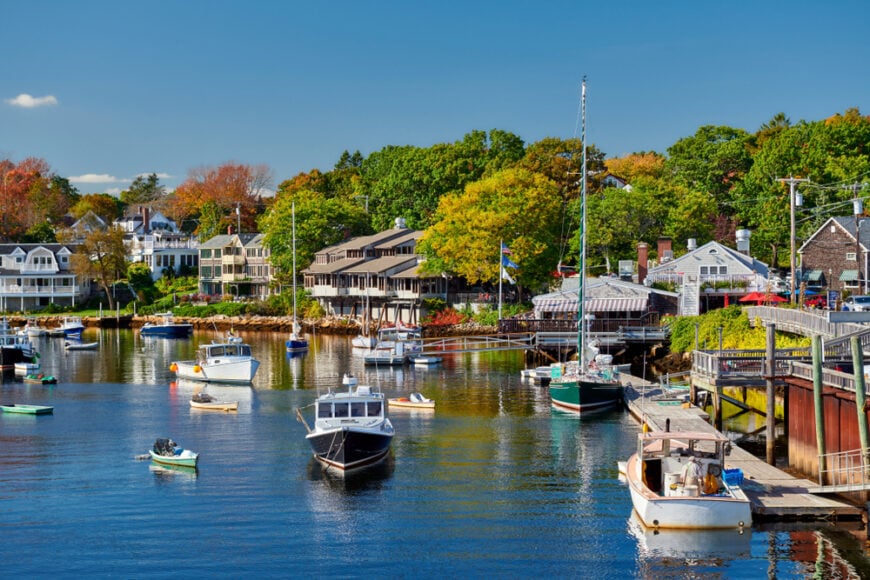
Ogunquit’s three-mile sandy beach and cliff-top Marginal Way trail offer high, unobstructed views of kittiwakes, gannets, and occasional passing pilot whales without leaving shore. Perkins Cove hosts small-group charters chasing mackerel bait balls, which often have feeding whales beneath and diving terns above.
Interpretive signs highlight geologic layers on the trail and note seasonal arrivals like black-legged kittiwakes that rest on rocky ledges. Quaint shops and art galleries fill former fish shacks, while evening theater at the Ogunquit Playhouse carries on a 90-year tradition.
Early risers meet at Footbridge Beach to watch the sun climb out of the Atlantic as seals cruise the rivermouth. It’s a rare spot where fine art, warm sand, and wild ocean life converge.
Ogunquit features 3-4 bedroom homes in the $350,000 to $650,000 range, a coastal retreat known for whale watching and its diverse seabird population.
Where is Ogunquit?
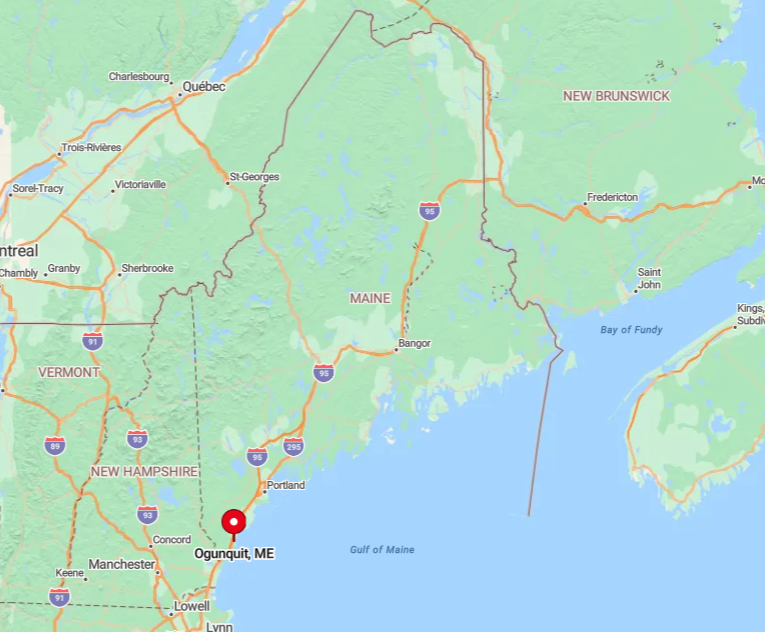
The town lies just over the New Hampshire border, 45 minutes south of Portland on U.S. Route 1, and reachable from I-95’s Exit 7. The confluence of the Ogunquit River and the Gulf of Maine creates sandbars that channel fish and attract marine mammals close to shore.
Visitors can board the seasonal Shoreline Explorer trolley from surrounding towns, reducing traffic stress. With the deepwater channel only a few miles offshore, whale-watch boats spend minimal time in transit.
6. Eastport, Maine
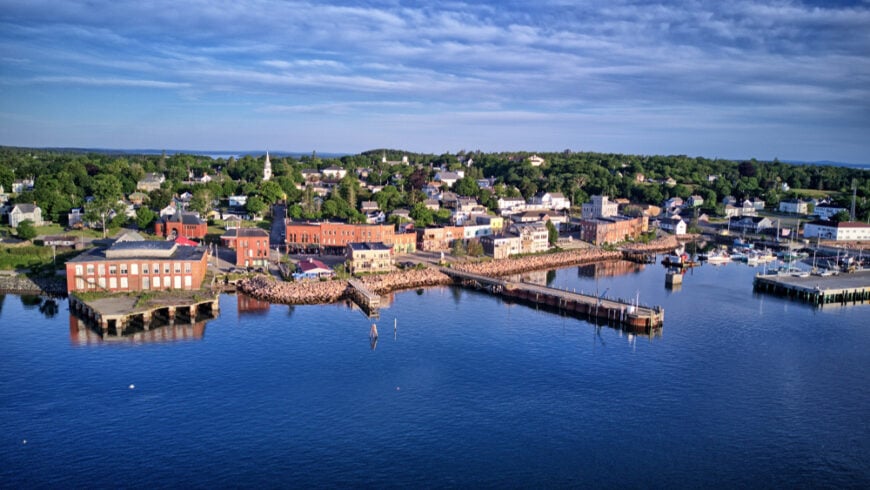
Eastport claims the deepest natural harbor on the East Coast and a proud status as the first U.S. city to see the sunrise daily, offering early light perfect for spotting soaring bald eagles and feeding minke whales.
Tours navigate the powerful tides of Passamaquoddy Bay, where nutrient-rich upwellings create plankton blooms that draw fin whales and hundreds of black-legged kittiwakes. On remote Treat Island, accessible by kayak at slack tide, visitors discover nesting common eiders away from crowds.
Downtown’s brick streets host an annual Pirate Festival and the Independence Day salmon bake, traditions rooted in the community’s maritime identity. The Tides Institute Museum showcases regional art inspired by fog and granite shores, giving context to the wildlife beyond the window.
Those who trek are rewarded with raw, unpolished coastal life that few travelers witness. Eastport offers 3-4 bedroom homes priced between $250,000 and $550,000, an ideal town for whale watching along the Maine coastline.
Where is Eastport?
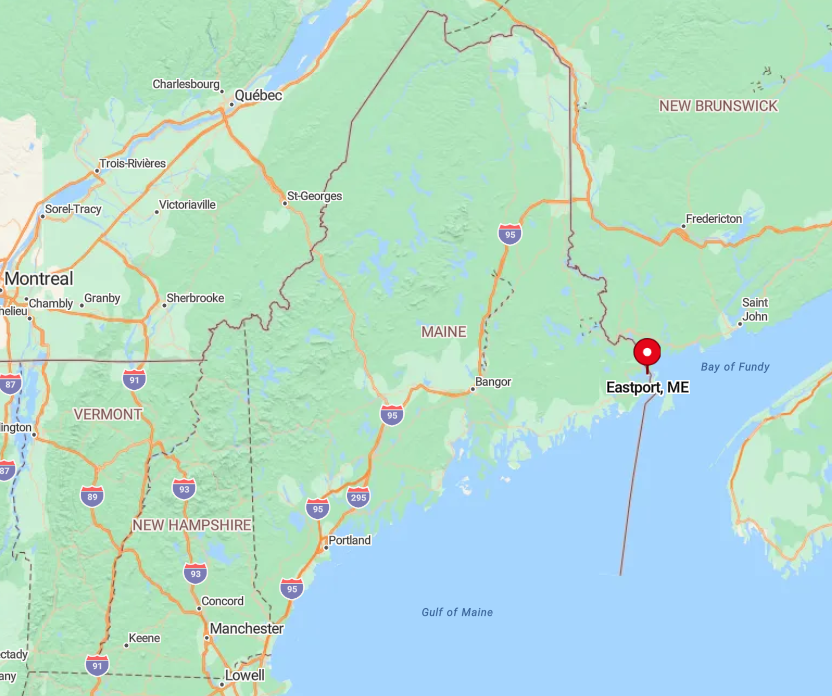
Eastport rests on Moose Island in far eastern Maine, linked to the mainland by a causeway and located about three hours northeast of Bangor via U.S. Route 1. Its Bay of Fundy adjacency means some of the world’s highest tides, over 20 vertical feet, churn nutrients that sustain rich food webs.
Calais International Airport handles small aircraft, while regional buses connect to Machias and Lubec for onward car rentals. The proximity to Canadian islands adds cross-border wildlife routes, though passports are required for certain boat excursions.
5. Montauk, New York

“The End” of Long Island lives up to its nickname for marine wildlife: deep submarine canyons begin just offshore, funneling sand eels that bring humpbacks, fin whales, and surprisingly frequent sperm whales. Charter skippers track whale spouts via real-time radio chatter, giving visitors strong odds of sightings even on shorter trips.
Birders head to Montauk Point State Park, where fall winds push thousands of seabirds past the lighthouse, including Cory’s shearwaters and jaegers rarely glimpsed elsewhere in the region.
Surfcasters share shoreline rocks with great black-backed gulls, all watching for the blitzes that signal stripers below and diving whales farther out. In town, lobster rolls and a storied surfing culture create an easygoing vibe at the Atlantic’s doorstep.
Sunrise whale breaches silhouetted against the lighthouse offer some of the most dramatic photography on the East Coast. Montauk features 3-4 bedroom homes priced between $700,000 and $1,000,000, a prime location for watching migrating whales and seabirds during the fall and spring.
Where is Montauk?
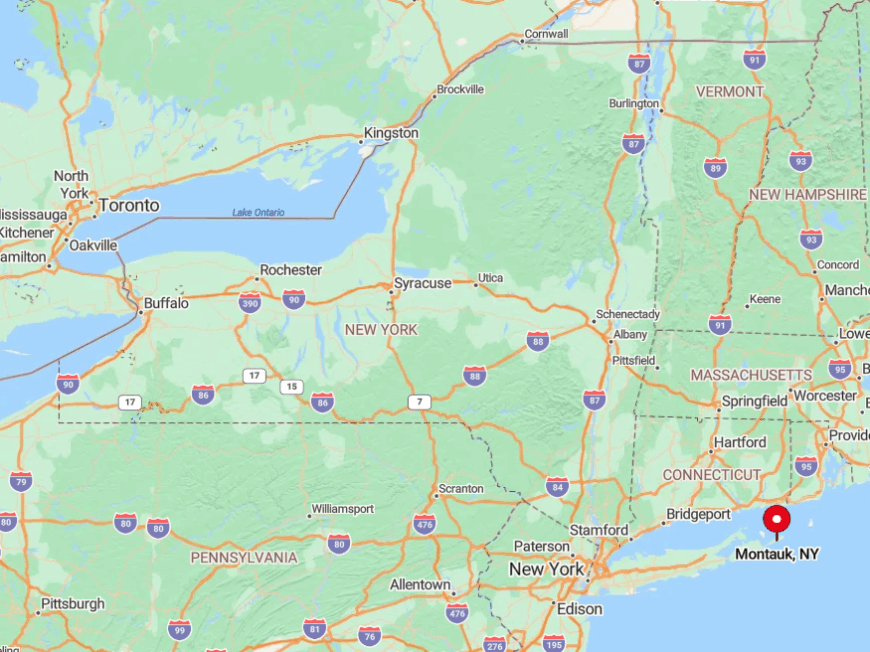
Montauk sits at the eastern tip of New York’s South Fork, a three-hour train ride on the Long Island Rail Road from Penn Station or roughly 120 miles by car via the Long Island Expressway. Its headland juts into the Atlantic, eliminating much of the transit time required to reach deep water from other New York ports.
The nearby Block Canyon begins just 30 nautical miles offshore, a brief run for faster boats. Seasonal Hampton Jitney buses and ferry links to Block Island further broaden travel options.
4. Cape May, New Jersey
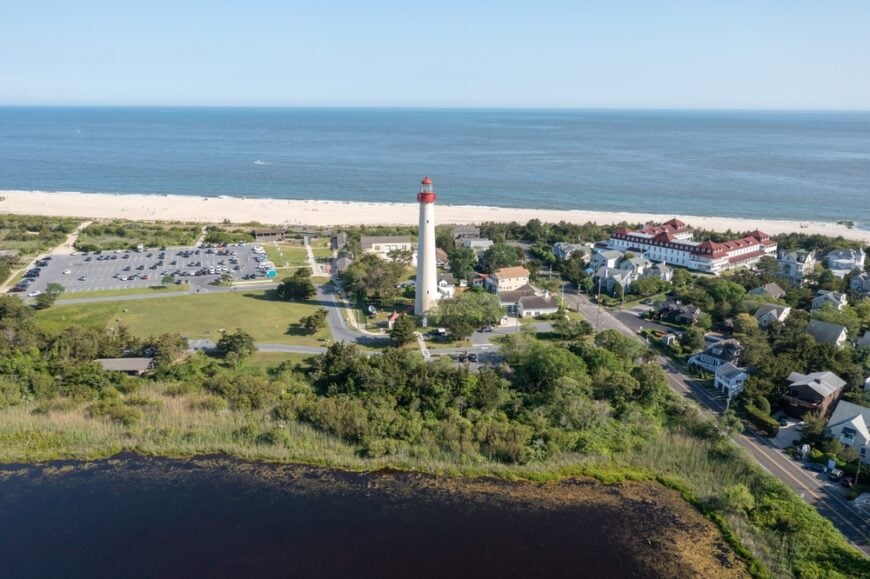
Cape May stands among North America’s foremost bird migration hotspots, with Cape May Point hosting fall hawk watches and spring seabird flights that can tally thousands in a single day. Offshore, whale-watch vessels circle the Delaware Bay entrance where humpbacks feast on menhaden pushed by complex currents.
The town’s Victorian architecture houses cozy B&Bs perfect for post-birding relaxation, and bicyclists wind through salt marsh trails in the adjacent Wetlands State Natural Area. Higbee Beach Wildlife Management Area offers dawn chorus walks where scarlet tanagers share the canopy with warblers en route north.
Evening brings drifts of laughing gulls heading to roost while local breweries toast another productive day outside. Cape May proves marine and avian marvels don’t require remote latitudes—just a well-placed peninsula.
Cape May presents 3-4 bedroom homes in the $600,000 to $900,000 range, a charming town perfect for whale and seabird watchers along the Atlantic coast.
Where is Cape May?

Located on the southern tip of New Jersey, Cape May is accessible via the Garden State Parkway’s Exit 0 or the year-round ferry from Lewes, Delaware. Its strategic spot at the Delaware Bay mouth concentrates birds and baitfish alike, funneling them into observation range.
Atlantic City International Airport lies an hour north, with rental cars completing the journey. Once in town, the flat terrain encourages biking between the lighthouse, the marina, and the beach viewing platforms.
3. Block Island, Rhode Island
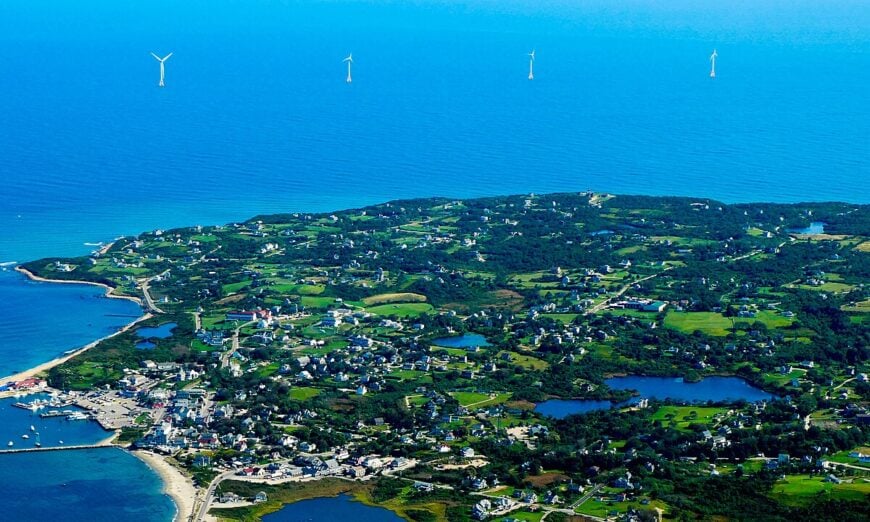
Ten miles off the mainland, Block Island combines oceanic solitude with a rich mosaic of freshwater ponds, bluffs, and sandy beaches that shelter more than 300 bird species annually.
Whale-watch tours from New Harbor often encounter fin and minke whales within sight of the Mohegan Bluffs, and lucky passengers in late summer may glimpse podding short-beaked common dolphins.
The Clay Head Nature Trail is a local secret for fall songbird “morning flight” phenomena, where thousands ride tailwinds over stone walls and goldenrod meadows. Offshore wind turbines have become unexpected roosts for resting gulls and terns, visible on calm days.
Quaint Old Harbor shops rent bikes so visitors can reach the Great Salt Pond mudflats for shorebird surveys. Block Island’s mix of habitats makes a single day’s species list remarkably long for its 10-square-mile footprint.
Block Island offers 3-4 bedroom homes priced between $500,000 and $800,000, a quiet island retreat with fantastic whale and bird watching opportunities.
Where is Block Island?

The island lies 13 miles south of Rhode Island’s mainland port of Point Judith, served by ferries that take one hour for standard service or 30 minutes on the high-speed option. Additional summer ferries run from New London, Montauk, and Newport, broadening access.
The island’s offshore position quickly places watchers over the continental shelf edge, where plankton upwellings fuel marine life. Once ashore, a free shuttle loops major stops, and rental mopeds or bikes help visitors explore gravel lanes leading to secluded lookouts.
2. Rockport, Massachusetts
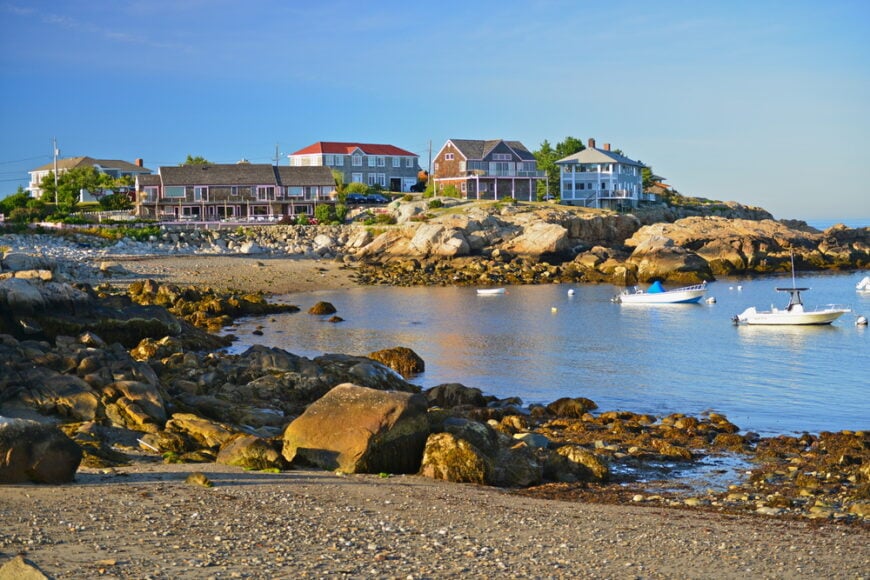
Rockport’s Bearskin Neck juts into the Atlantic, providing panoramic cliffs from which watchers often spy harbor seals and the spouts of distant whales without boarding a boat.
Still, excursion craft leave nearby Gloucester Harbor—America’s original whale-watch capital—and pick up passengers at Rockport’s T-Wharf for half-day trips to Stellwagen Bank.
Back on land, Halibut Point State Park’s granite quarry forms a natural amphitheater where sea ducks congregate in winter, and spring brings northbound gannets slicing low over the swell. Artists have long painted Motif No. 1, the famed red fishing shack, but savvy birders set up scopes behind the studios for alcids bobbing offshore.
Ice-cream cones from Dock Square ease breezy afternoons of scanning the horizon. It’s a pocket-sized village where culture frames every water view. Rockport presents 3-4 bedroom homes in the $500,000 to $800,000 range, a scenic coastal town known for its whale watching and bird watching opportunities.
Where is Rockport?
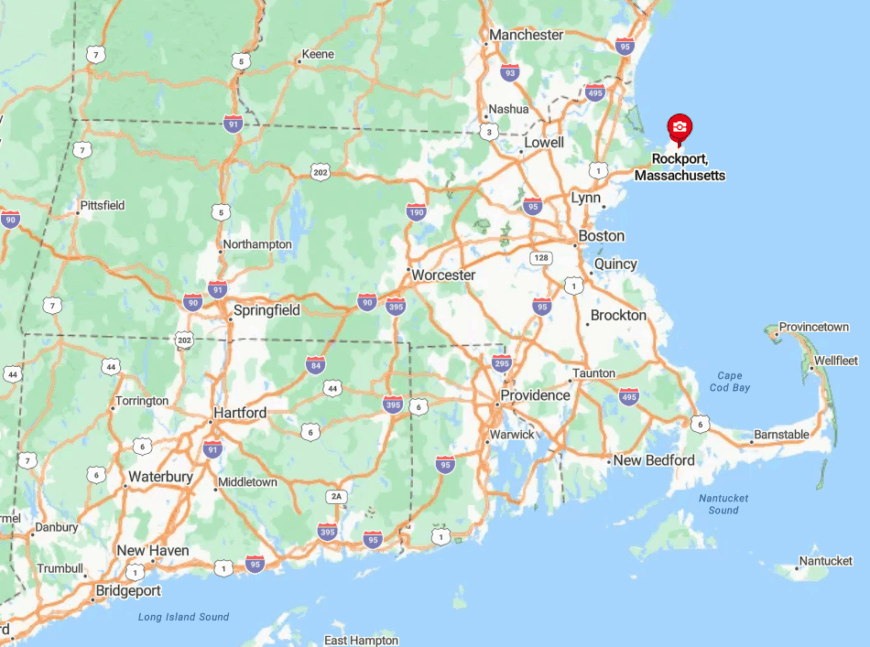
Rockport crowns Cape Ann, 40 miles north of Boston, on the Massachusetts Bay Transportation Authority’s commuter rail or via Route 128. The cape’s outer curve sits closer to Stellwagen Bank than larger Boston harbors, trimming cruising time.
Narrow streets encourage parking once and walking or biking between granite headlands and coves. Logan Airport connections feed into train lines that deposit visitors two blocks from the harbor.
1. Lubec, Maine
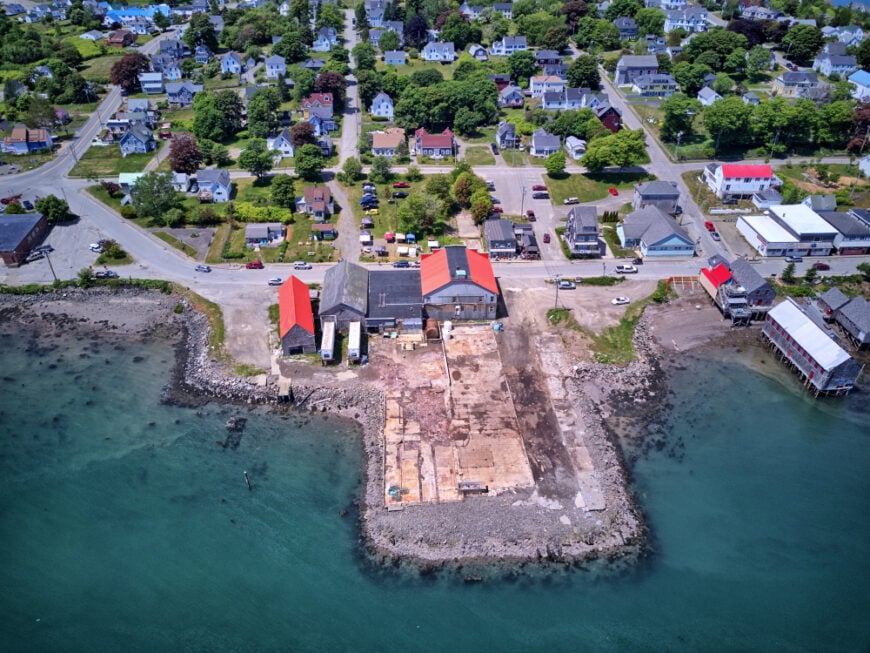
Lubec greets dawn before any other American town, and its bold headlands overlook the narrow “Old Sow” whirlpool where tides roar between the U.S. and Canada.
Whale-watch skippers navigate these currents en route to the Bay of Fundy’s nutrient-rich waters, encountering humpbacks, fin whales, and occasionally rarer sei whales.
Land-based observers set up at Quoddy Head State Park’s red-striped lighthouse, spotting passing puffins, northern gannets, and rafts of phalaropes swirling like confetti on the rip. The lesser-known Hamilton Cove Preserve offers secluded cliff walks where black-legged kittiwakes nest below, audible before being seen.
In town, Cohill’s Inn pours local seaweed ale while fishermen recount sightings from the day. Lubec’s raw beauty and sparse crowds make every encounter feel personal and earned.
Lubec features 3-4 bedroom homes priced between $200,000 and $500,000, a hidden gem for those seeking whale watching and seabird viewing along the northern coast.
Where is Lubec?
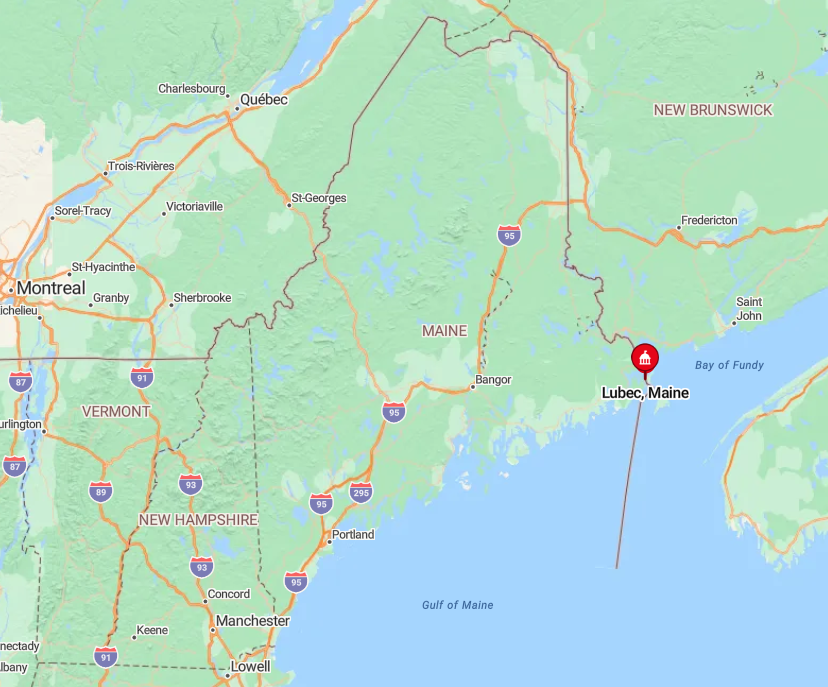
Lubec sits on Maine’s easternmost tip, a four-hour drive from Bangor via U.S. Route 1, with the Roosevelt International Bridge linking it to Campobello Island, New Brunswick. Its position at the mouth of Passamaquoddy Bay means 25-foot tides twice daily, stirring plankton that support a rich food chain.
Regional flights reach Machias Valley Airport, 45 minutes away, where rental cars cover the final stretch. Because deep water begins almost immediately offshore, even small craft need little fuel to reach prime whale and seabird corridors.






